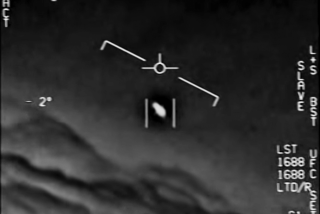BOOK REVIEW / SCIENCE : A Mind’s-Eye View of a Great Galactic Fantasy : BLACK HOLES & TIME WARPS: Einstein’s Outrageous Legacy <i> by Kip S. Thorne</i> ; Norton $30, 619 pages
- Share via
Astrophysicists who can write are a lucky bunch. In books with titles that virtually proclaim them to be modern-day Sufi mystics or Jewish cabalists (recent publications include “Aspects of Eternity” and “Wrinkles in Time”), they get to bend our minds with a universe of astonishing-but-true facts.
In a scientifically plausible story that opens this warm and wise book, for instance, Caltech physics professor Kip Thorne takes us near the “event horizon” or opening of a black hole.
As we hover over the hole in our spaceship for a year, Thorne explains its properties: The hole is mostly a void, but at its center, in a point that is a hundred billion billion times smaller than an atomic nucleus, lies a “singularity” containing 10 times more matter than that of the sun.
After our tour, we ruefully decide not to return home, because our friends would have changed too much for our liking: They would have been dead, our computer informs us, for about 4 billion years.
There is a rub, however, to the kind of science writing that Thorne is doing here. Although stories such as these certainly bend our minds, they are generally too incredible, too common sense-less to actually change them.
That most of this century’s great physicists have been unadulterated loners suggests that an understanding of the counter-intuitive concepts of modern cosmology can only come about when one shuns the sunny and warm but blinding light of mainstream society.
Einstein, for instance, scorned the physics Establishment of his day after being snubbed by its maximum leader, Heinrich Weber. And Richard Feynman, whose endowed chair Thorne holds at Caltech, often gained insights only after spending hours alone rolling and wiggling on the floor.
For those of us disinclined toward such eclectic monasticism, truly fathoming all the concepts in this book can be difficult.
But Thorne is an ideal guide, situated halfway between the loners (“I hide from the world,” he confesses here, “retreating to the mountains or an isolated seacoast, or even just into an attic, (to) think”) and the socialites (an active teaching professor at Caltech, he helped his gregarious friend Carl Sagan concoct the scientific concepts underlying Sagan’s 1985 novel “Contact”).
Thorne is modest (allowing his illustrator to depict him with a paunch!), reassuring (“Be patient, dear reader. This chapter is probably the most difficult one in the book”) and even, at times, romantic: One illustration depicts him reaching through a “wormhole”--or tunnel through the curved surface of space-time--so he won’t lose hold of his wife’s hand as she zooms into a distant galaxy.
Thorne does his best to hold our hand too, but this book can nevertheless prove daunting at times. This lay reader--perplexed by some of Thorne’s analogical exercises (one asks us to jump off a cliff while watching a dog, a cannon, cannonball and tree through a 12-paned window we hold in our hands)--sought out some tutorial help from Sir Arthur Eddington’s classic 1930 essay on time.
“If I speak of a velocity of 40 kilometres a second,” Eddington wrote, “I must add ‘relative to the earth’ . . . or whatever reference body I have in mind. But it is a curious fact that if I speak of a velocity of 186,000 miles a second (the speed of light) it is unnecessary to add the explanatory phrase. Relative to what? Relative to any and every star or particle of matter in the universe.”
This notion that light travels at the same speed relative to any observer is, in a nutshell, the “outrageous legacy” alluded to in Thorne’s subtitle. Because it means that you--speeding forward on some super-bullet train at, say, 150,000 miles per second, must see light approaching at the same speed that I, sitting in the train station, observe.
Einstein’s greatest epiphany was the realization that if the speed of light had to remain constant, then the only variable that could explain why different observers measure the same speed is time: Your clock on the train, in short, has to run more slowly than my clock in the station.
(Einstein’s notion that speed and gravity “warp” time has been confirmed in hundreds of subsequent studies.)
The train analogy has been used to explain relativity in decades of physics textbooks.
But Thorne does something novel with Einstein’s theories: Combining them with theories in quantum mechanics, he creates a flock of bizarre but plausible scenarios, the most mind-boggling of which is the “growing” of wormholes.
Wormholes may well exist all around us in a continuously shifting foam, Thorne writes. To journey through them in their present form would be a bit uncomfortable, because each one measures less than a billion-trillion- trillionth of an inch across.
But one day, Thorne writes, it may be possible to “grow them” large enough so that they can become a kind of galactic expressway on which we can speed off to the destinations of our fancy, be they millions of years or trillions of miles away.
More to Read
Sign up for our Book Club newsletter
Get the latest news, events and more from the Los Angeles Times Book Club, and help us get L.A. reading and talking.
You may occasionally receive promotional content from the Los Angeles Times.










